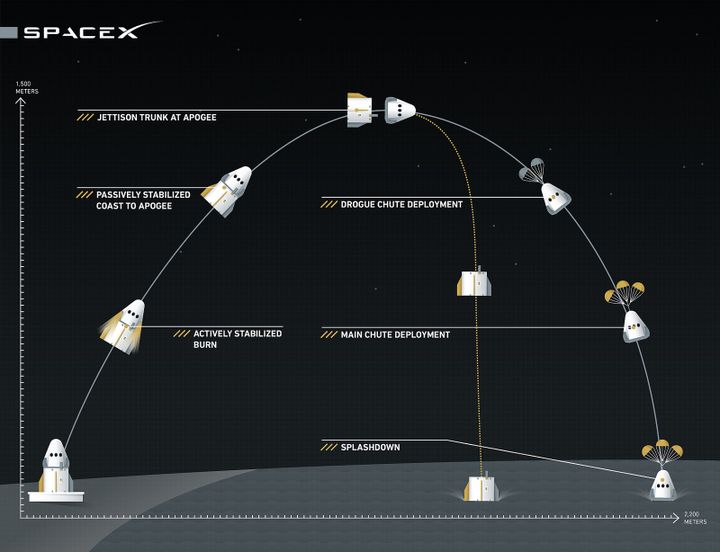
Launching humans into space is a tricky business -- especially so if it comes time to abort the mission. Imagine the complex sequence of events that need to happen: the crew capsule has to somehow catapult away from the impending disaster quickly, but safely enough so the occupants inside can survive.
And lest one thinks a problem isn't possible, history has shown us it happens: the Challenger shuttle explosion of 1986 is the most notable example in the public's memory. In that situation, an O-ring near the bottom of one of the solid rocket boosters failed. Solid rocket boosters can't be turned off in the case of a problem; they just keep on burning. It illustrates just one of the many dangers astronauts face when going into space.
Earlier this week, SpaceX showed off the abort system that it is building into its new crew system. The company plans to retrofit its cargo Dragon spacecraft to bear astronauts to the International Space Station. And as you can see from the video below, the test (at first glance) appears to have met all objectives. It was quick, but did the job of bringing the capsule into the Atlantic Ocean nearby the Kennedy Space Center.
"The flight test is a vital milestone in the company’s development effort and furthers its plan to meet a major requirement for the next generation of piloted spacecraft -- an escape system that can quickly and safely take crew members away from their rocket while on the pad and through their ascent to orbit," NASA wrote in a statement shortly after the test was completed May 6. "
"SpaceX can use the test data to help refine its aerodynamic and performance models, and its design, to help ensure crew safety throughout all phases of flight."
And what's more interesting is the rockets being used for the escape system are something never seen before -- they are more powerful than the ones used during the Mercury program of the 1960s, according to Government Technology. "Unlike the old rescue systems included on Mercury and Apollo missions, the engines are not mounted on a tower appendage and are never jettisoned, so they are always available," added the publication.
Spaceflight will never be a safe business, much as we would like it to be, but it is great to see that with each successive generation of spacecraft the safety features get stronger. And indeed, with smarter computers, systems engineered by hard-won experience, and the power of computer simulations, we are a lot further ahead in figuring out the dangers than those who planned the moon landings of the 1960s.
The applications of this technology beyond space are perhaps too new to think about, but it would be nice to see reusable engines used for other sorts of ideas such as aviation or even in industrial uses. Having reliable engines goes a long way to making transportation and other areas safer.
Meanwhile, keep watching SpaceX for some more fun uses of technology in the next little while, including a rocket that may land on a barge sometime soon. (It's been tried several times, but so far with no success.)
Top image: The sequence of the SpaceX abort test. Credit: SpaceX








